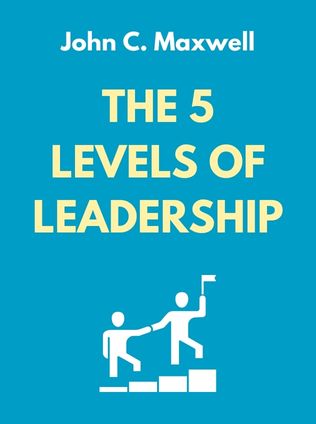
The 5 Levels of Leadership
Proven Steps to Maximize Your Potential
By John C. Maxwell
Published 10/2011
About the Author
John C. Maxwell is an internationally recognized leadership expert, speaker, and author who has sold over 20 million books. He is the founder of EQUIP, a nonprofit organization that has trained more than 5 million leaders in 126 countries. Maxwell has penned several bestsellers, including "The 21 Irrefutable Laws of Leadership," "Developing the Leader Within You," and "The 21 Indispensable Qualities of a Leader," each selling over a million copies. His work focuses on leadership development, emphasizing practical steps and principles for personal and organizational growth.
Main Idea
"The 5 Levels of Leadership" by John C. Maxwell presents a structured framework for understanding and progressing through different stages of leadership. Maxwell asserts that true leadership transcends mere positional authority and requires building relationships, achieving results, developing people, and creating a lasting legacy. The five levels—Position, Permission, Production, People Development, and Pinnacle—serve as a roadmap for leaders to follow in their journey to becoming influential and respected figures.
Table of Contents
- Introduction: The Leadership Journey
- Level 1: Position
- Level 2: Permission
- Level 3: Production
- Level 4: People Development
- Level 5: Pinnacle
- Conclusion: Your Leadership Game Plan
Introduction: The Leadership Journey
Maxwell opens by emphasizing that leadership is not about titles or positions but about influence. True leadership is a journey that involves continuous growth and learning. He introduces the concept of the five levels of leadership, which serve as steps in this journey. Each level builds on the previous one, requiring leaders to master new skills and mindsets to progress.
Level 1: Position
The first level of leadership is Position. At this stage, people follow you because they have to, not necessarily because they want to. Maxwell explains that having a leadership position is an important starting point, but it should not be the end goal. Leadership based solely on position often leads to limited influence and a lack of genuine commitment from followers.
Maxwell outlines both the upsides and downsides of positional leadership:
- Upsides:
- A leadership position is usually given to individuals with potential.
- It provides a recognized authority to lead.
- It offers an invitation to grow as a leader.
- It allows leaders to shape and define their leadership style.
- Downsides:
- Positional leadership can be misleading, promising more than it delivers.
- It often devalues people, leading to low morale.
- It encourages political maneuvering over genuine contribution.
- It places rights over responsibilities.
- It can be isolating and lonely.
Maxwell underscores that while a leadership position is necessary, it should be viewed as a foundation upon which to build real influence and effectiveness.
Sign up for FREE and get access to 1,400+ books summaries.
You May Also Like
The Subtle Art of Not Giving a F*ck
A Counterintuitive Approach to Living a Good Life
By Mark MansonRich Dad Poor Dad
What the Rich Teach Their Kids About Money - That the Poor and Middle Class Do Not!
By Robert T. KiyosakiHow To Win Friends and Influence People
The All-Time Classic Manual Of People Skills
By Dale CarnegieQuiet: The Power of Introverts
The Power of Introverts in a World That Can't Stop Talking
By Susan Cain



















